Putter Reviews
Machine Fatback Putter Review
Fatback: what one should fry chicken in were you to follow grandma’s tried and true recipe. The one discovered long before a Kentucky Colonel was old enough to acquire the appearance of a southern gentleman much less discover the secret of eleven herbs and spices.
 Fatback: what one should fry chicken in were you to follow grandma’s tried and true recipe. The one discovered long before a Kentucky Colonel was old enough to acquire the appearance of a southern gentleman much less discover the secret of eleven herbs and spices.
Fatback: what one should fry chicken in were you to follow grandma’s tried and true recipe. The one discovered long before a Kentucky Colonel was old enough to acquire the appearance of a southern gentleman much less discover the secret of eleven herbs and spices.
That’s what I thought when I first heard a Machine Fatback was the style putter best suited for me. Not anymore. After two conversations with Dave Billings, the creative mastermind of all the Machine brand putters, and numerous emails with Chris Hoeppner (who many of you know if you’ve spent anytime in the Flatstick forum) the word Fatback no longer causes me to think immediately of chicken. What comes to mind now is a unique instrument, both practical and beautifully designed to help me play better golf.
 Choosing a custom putter involves a lot of questions. A LOT of questions. Likes and dislikes of the putters used in the past. What worked best, what didn’t work so well, what looked best to my eye, what about the appearance of a putter used didn’t I like. Which leads to a lot of thinking. A LOT of thinking. All that thinking leads to introspection and doubt, like maybe it’s never been the putter at fault and I just flat suck at putting. Which leads to places in one’s psyche best left undisturbed, adequacy issues and all of that kind of thing best categorized as witchcraft.
Choosing a custom putter involves a lot of questions. A LOT of questions. Likes and dislikes of the putters used in the past. What worked best, what didn’t work so well, what looked best to my eye, what about the appearance of a putter used didn’t I like. Which leads to a lot of thinking. A LOT of thinking. All that thinking leads to introspection and doubt, like maybe it’s never been the putter at fault and I just flat suck at putting. Which leads to places in one’s psyche best left undisturbed, adequacy issues and all of that kind of thing best categorized as witchcraft.
After deciding on a style of putter the next question is what kind of metal should be used to create the club. Once again, questions and choices which can be hard on a person who shies away from introspection out of fear of dark scary places and has a problem with decisions involving personal choice. The decision issue is one reason why I own multiples of everything. With this putter I had the choice of 303 Stainless steel, 1018 Carbon Steel, Copper, or Aluminum Bronze. I chose the Aluminum Bronze, the thinking being Bronze is bright, shiny, and pretty; all the adjectives the intelligent 21st century man uses when selecting jewelry for the woman (or women as the case may be) in his life. Being said intelligent man with significant formal education I also know that Bronze is the first great metal to have an entire Age named after it, marking the first step toward the Age of the Cellphone in which we are currently ensconced. Now Bronze combined with aluminum, which airplanes are made of, should create an attractive putter with natural aerodynamic qualities sufficient to satisfy any charter member of the Tommy Bolt School of Club Throwing. I may not be a metallurgist, but I do have enough practical knowledge to recognize the unique characteristics afforded by this combination.
It’s all too rare to engage conversationally with anyone who is knowledgeable and passionate about what that person does. Dave Billings is one such individual, and he was gracious enough to speak to me on two separate occasions. What fascinated me about our conversations was that, despite my lack of understanding of metal work, or the actual science (beyond the simple physics involved in imparting directional force to a stationary round object) I felt myself caught up in Mr. Billings passion. He loves what he does, and enjoys explaining his process. I came away from both our conversations energized about putters and putting. I had so many options about the visual characteristics of this putter it was almost overwhelming. I was especially interested in his description of peening the head, creating multiple indentations with whacks of a hammer. This creates very attractive interactions with light adding to the beauty of the finished product. I did not choose to have this done as I need really simple visuals on all my clubs. I have a difficult time focusing on just one thing when I’m on the golf course. I have been known to be in the middle of a swing, hear a bird singing and identify said bird in my mind resulting in my golf ball suddenly becoming directionally challenged. I could see myself with a peened putter getting caught up in the play of light off the head and forgetting to complete my stroke. Not exactly a desirable outcome. So simple we decided was best.
.jpg)
I want three site lines, as that is what I find helps me align the putter accurately. It’s not for everyone, I believe it was a first for Machine, but they came out quite nicely. I also chose 34 inch length, 2* loft and standard 71* lie and 350gm headweight. The milling marks on the face are set from heel to toe because they actually work to get the ball rolling, something not achieved with lines from top to bottom of the head. Mr. Billings explained all of that to me as well, and while I don’t have a grasp of the technical explanation I now have practical experience and can say it does indeed work. Quite nicely in fact. At Mr Hoeppner’s suggestion the neck is hand bent to make the face nearly face balanced. What I’ve found also is that the neck helps with alignment so I keep a right angle to my target line. It’s also quite sexy.
The quality of the workmanship is outstanding. The fit and finish is solid. Speaking of finish, Mr. Hoeppner sent me an email advising me that after having polished the putter head the finished product was bright enough to rival the light emitted from the sun. Not exactly a desirable quality when outdoors playing golf. He suggested a “mist” finish called Morning Dew, which removed the reflective quality of the bronze. I will admit I considered leaving the head alone, which would have allowed me to blind my playing partners by scorching their retinas. Would have made winning so much easier. I changed my mind when I concluded that bothered me, proving I have higher ethical standards than most long term congressmen (not a great achievement I admit, but hey it’s a start).
This club came with a set of weights so I can tinker with the headweight and location either to the heel or toe. I have not had the opportunity to experiment with this yet, due to global warming the temperatures have been in the 40’s during the day and well below freezing overnight. I’ll mess around with those once we get back into the 60’s. The grip is a blue rubber reverse arch, which I’ll be changing out soon. I have short fingers and can’t get the grip seated comfortably in my hands. I have a Gripmaster Tour Laced grip that should be a nice fit with this club.
To date, I’ve made a lot of putts with this putter. It’s very easy to line up thanks to the sight lines and the cavity. The head is longer heel to toe than my Yes Marilyn and the lines I see looking down give me real confidence I’m square to my target line. The ball off the face is intriguing, I hesitate to say “soft as butter” because that’s not quite accurate. It feels like the ball attaches to the face for a split second after contact then rolls (rolls, not hops, jumps, stutters, or skids) off the head along the intended line. There is definitely a “click” when you strike the ball, but it’s muted quite pleasantly. The feedback into my hands is also very honest, straight forward, and telling. It’s not at all weird like the Yes feedback, which is quite smooth when the sweetspot is hit, but clunky, chunky, noticeably dead when you miss that spot. I really like that aspect of this club because I am much more a feel player than mechanical or gorilla type player. Distance control is at this early point quite acceptable, even on slight mishits there is not a lot of lost distance. Nor are directional issues significant on the same mishit. I also like that the feedback is instantaneous, I know if I hit the ball poorly and just how poorly by the feel and sound. On extreme toe hits I don’t get a lot of twisting, as I have a very light grip pressure this keeps the ball more on line than with any of my other putters. I find this property particularly advantageous since when I feel a mishit my hands grab at the putter grip in an effort to get the clubhead back online. The ball can go anywhere afterwards, anywhere that is except into the hole. With the Fatback, I don’t grab reflexively and the ball stays close to the intended line, which means I may luck a few of those into the hole.
Overall, this is one beautiful putter. I am looking forward to spending a lot more time getting better acquainted with it’s properties. I can highly recommend Doglegright, Machine putters, Mr. Dave Billings, and Mr. Chris Hoeppner. They more than fulfilled all my expectations of a custom putter acquisition.
- LIKE0
- LEGIT0
- WOW0
- LOL0
- IDHT0
- FLOP0
- OB0
- SHANK0
Equipment
Blade vs. mallet: What style putters do the top-50 players in the world use? (2022 update)
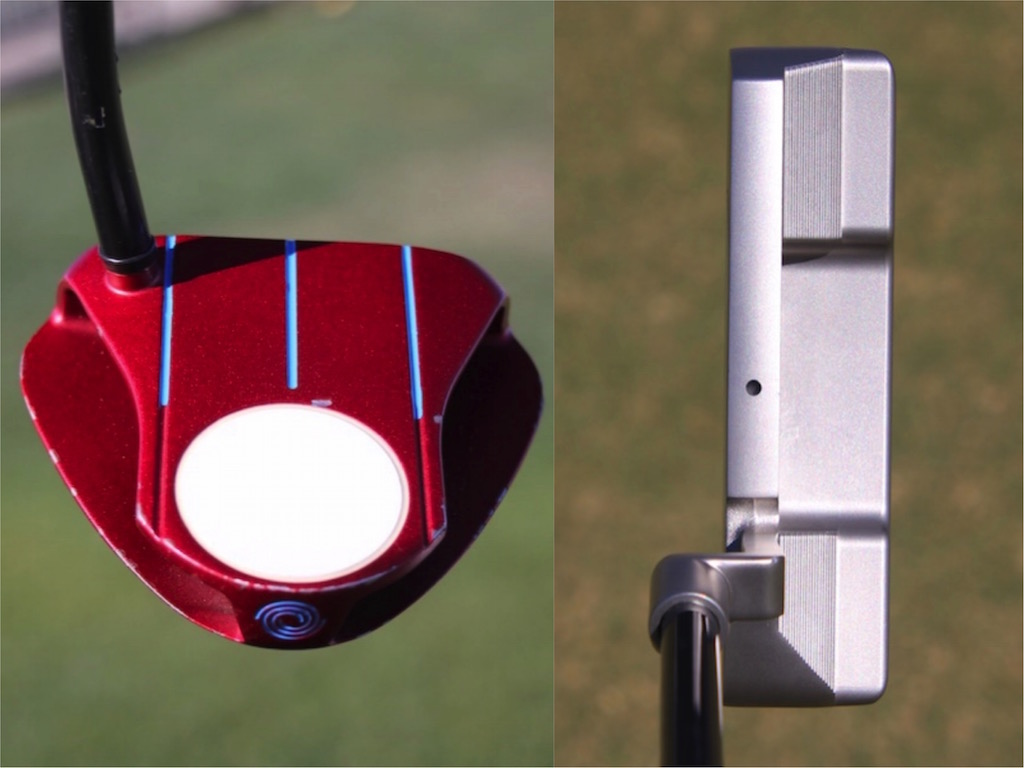
Four years ago, I wrote an article where I analyzed the putters that the top-50 players in the world were using, and the top-50 players in strokes gained: putting. I wanted to find out whether more mallet-style putters, or blade-style putters, were being used by the world’s best.
In 2018, I found that 44 percent of the top-50 players in the Official World Golf Rankings were using mallet style putters, and 56 percent of the top-50 in strokes gained: putting were using mallet putters.
Flash forward to 2022, and it would seem that more and more top golfers are switching into mallet putters – Scottie Scheffler, for example, just switched into a mallet putter after using a blade-style putter throughout his career.
What are the actual numbers, though? Are more top PGA Tour players really using mallet putters these days, or is the shift overblown?
I wanted to find out.
For my research, I simply went through the most recent GolfWRX WITB photos, and the most recent photos on Getty Images, to figure out what style putter each player in the Top-50 in the OWGR is using, as well as each Top-50 player in strokes gained: putting on the PGA Tour for the 2021-22 season.
Below are the results:
Top-50 in OWGR: Blade or Mallet?
Mallet putter users, 62 percent (31 out of 50)
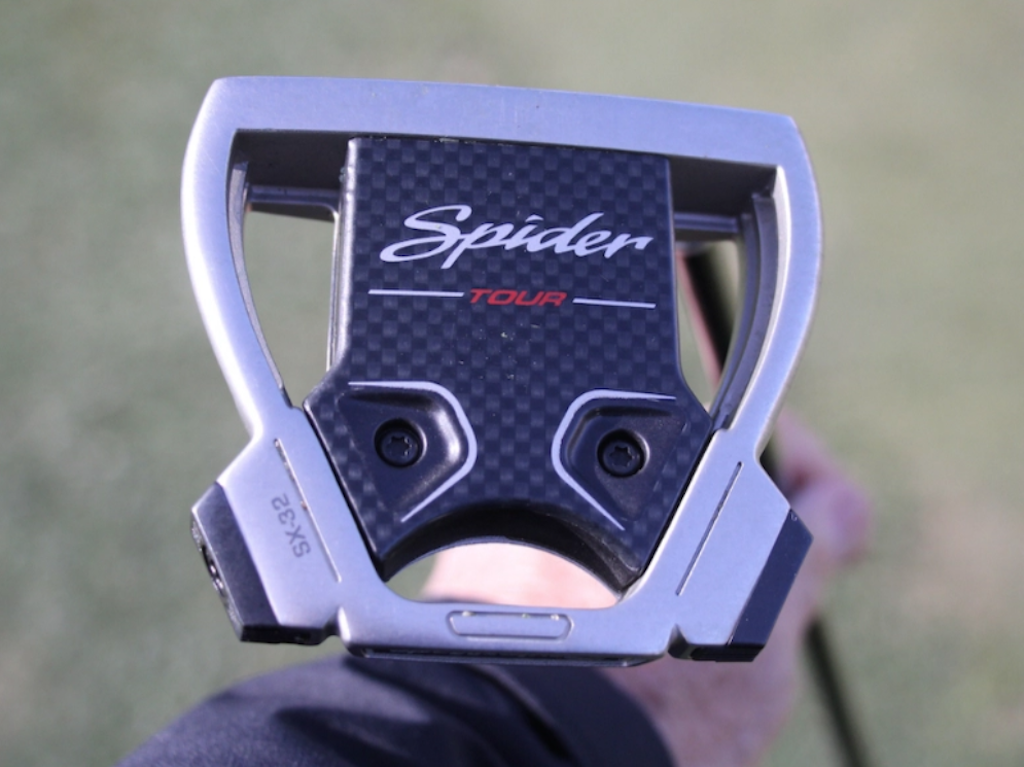
Rory McIlroy’s TaylorMade Spider Tour mallet putter
Rory McIlroy (No. 1: TaylorMade Spider Tour Hydroblast)
Scottie Scheffler (No. 2: Scotty Cameron T-5.5 Proto)
Patrick Cantlay (No. 4: Scotty Cameron T5 Proto)
Jon Rahm (N0. 5: Odyssey Rossie S White Hot OG)
Xander Schauffele (No. 6: Odyssey O-Works #7 CH Red)
Will Zalatoris (No. 7: Scotty Cameron Circle T Phantom X T-11 Proto)
Justin Thomas (No. 8: Scotty Cameron T5 Proto Tour-Only custom)
Viktor Hovland (No. 11: Ping PLD DS 72)
Sam Burns (No. 12: Odyssey O-Works 7S)
Billy Horschel (No. 16: Ping PLD Sigma 2 Tyne 4)
Cameron Young (No. 17: Scotty Cameron T5 prototype)
Max Homa (No. 18: Scotty Cameron Phantom X T5.5 Prototype)
Sungjae Im (No. 20: Scotty Cameron Flowback 5 Prototype)
Shane Lowry: (No. 21: Odyssey DFX 2-ball)
Abraham Ancer (No. 23: Odyssey White Hot No. 5 Stroke Lab)
Keegan Bradley (No. 25: Odyssey Versa Jailbird)
Sepp Straka (No. 27: Odyssey Tuttle Stroke Lab)
Tyrrell Hatton (No. 28: Ping Vault Oslo)
Kevin Kisner (No. 29: Odyssey 2-Ball 11)
Dustin Johnson (No. 30: TaylorMade Spider GT Black)
Corey Conners (No. 31: Ping PLD Prototype)
Tom Hoge (No. 32: TaylorMade Spider X Hydroblast)
K.H. Lee (No. 33: Odyssey Works Versa 2-ball)
Adam Scott (No. 34: L.A.B. Golf Mezz.1 prototype)
Aaron Wise (No. 36: TaylorMade Ghost)
Brian Harman (No. 37: TaylorMade OS CB)
Daniel Berger (No. 43: TaylorMade Spider X Hydroblast)
Jason Kokrak (No. 44: Bettinardi Studio Stock 38)
Harold Varner III (No. 46: Odyssey White Hot OG 7S)
Seamus Power (No. 48: Ping PLD3 Mallet)
Harris English (No. 49: Ping Scottsdale Hohum)
Blade putter users, 38 percent (19 out of 50)
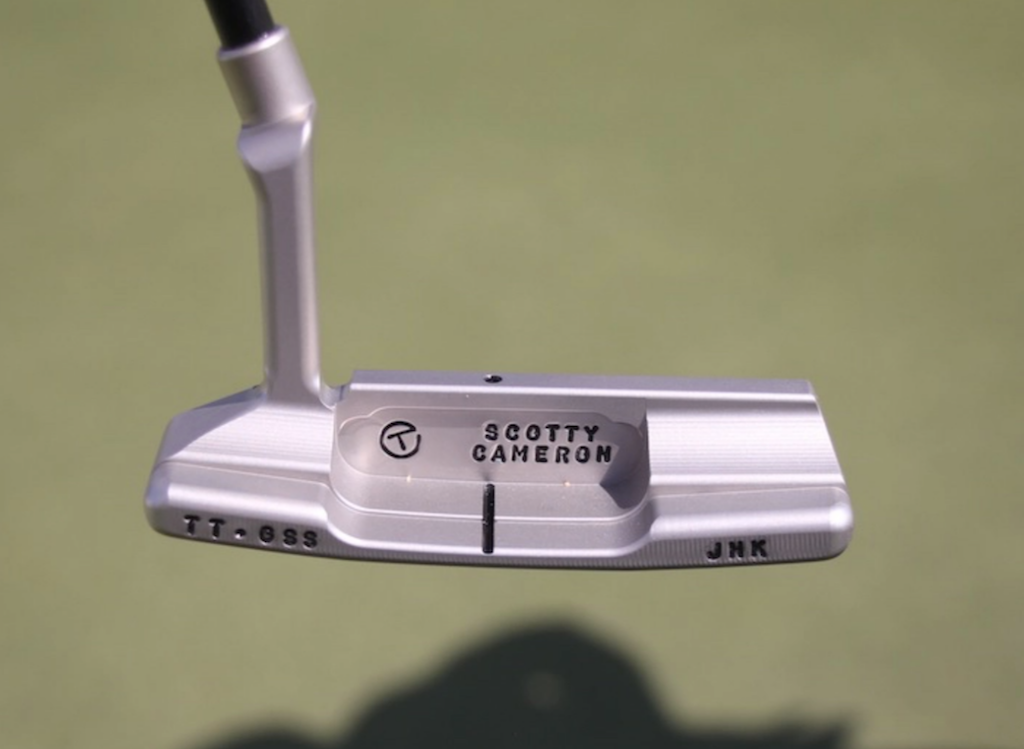
Tom Kim’s new custom Scotty Cameron blade-style putter
Cameron Smith (No. 3: Scotty Cameron 009M Prototype)
Collin Morikawa (No. 9: TaylorMade TP Soto)
Matt Fitzpatrick (No. 10: Bettinardi DASS Prototype)
Jordan Spieth (No. 13: Scotty Cameron 009 tour prototype)
Tony Finau (No. 14: Ping PLD Prototype)
Joohyung “Tom” Kim (No. 15: Scotty Cameron TourType GSS Prototype)
Hideki Matsuyama (No. 19: Scotty Cameron Newport 2 GSS)
Joaquin Niemann (No. 22: Prototype Ping PLD Anser)
Tommy Fleetwood (No. 24: TaylorMade TP Juno)
Ryan Fox (No. 26: Ping Anser 2D)
Thomas Pieters (No. 35: Scotty Cameron Squareback Select 2 Tour Only)
Talor Gooch (No. 38: Odyssey Tri-Hot Two)
Brooks Koepka (No. 39: Scotty Cameron Teryllium TNP2)
Kevin Na (No. 40: Odyssey Toulon Madison)
Kurt Kitayama (No. 41: Scotty Cameron Newport prototype)
Louis Oosthuizen (No. 42: Ping Vault 2.0 Voss)
Mito Pereira (No. 45: Ping Vault 2.0 Dale Anser Stealth)
Paul Casey (No. 47: Scotty Cameron 009M Prototype)
Alex Noren (No. 50: Odyssey O-Works 1W)
Top-50 in Strokes Gained: Putting
Mallet users: 70 percent (35 of 50 players)
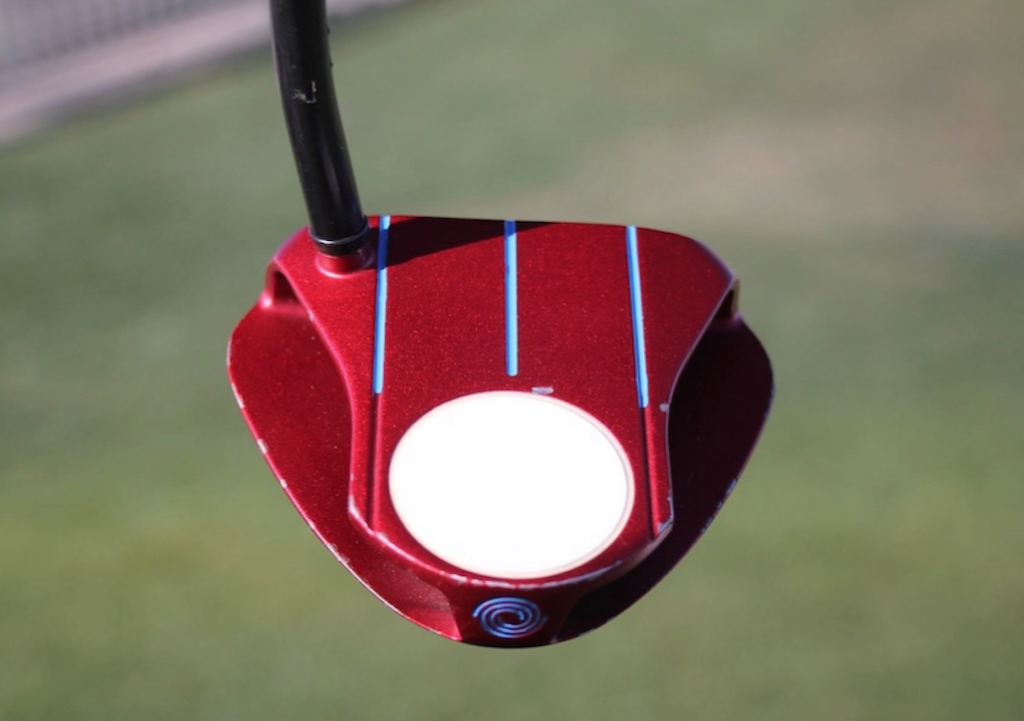
Kelly Kraft’s custom Odyssey Versa 1-Ball Red prototype mallet
Lucas Herbert (No. 1: TaylorMade Spider X Hydroblast)
Denny McCarthy (No. 2: Scotty Cameron GoLo N7)
Tyrrell Hatton (No. 4: Ping Vault Oslo)
Beau Hossler (No. 5: Odyssey 2-Ball Ten)
Christiaan Bezuidenhout (No. 6: Odyssey White Hot OG #7)
Kelly Kraft (No. 7: Odyssey Versa 1-ball Red Prototype)
Kevin Kisner (No. 9: Odyssey 2-ball 11)
Sam Burns (No. 10: Odyssey O-Works 7S)
Martin Trainer (No. 12: Scotty Cameron Circle T Prototype Phantom T12)
Chesson Hadley (No. 13: Odyssey White Hot OG 2-Ball)
Mackenzie Hughes (No. 14: Ping Scottsdale TR Piper C)
Rory McIlroy (No. 16: TaylorMade Spider Tour Hydroblast)
Ian Poulter (No. 17: Scotty Cameron T-11 Proto)
Justin Rose (No. 20: Axis1 Rose Prototype)
Billy Horschel (No. 21: Ping PLD Sigma 2 Tyne 4)
Matthew Wolff (No. 23: TaylorMade GT Notchback)
Adam Long (No. 24: Scotty Cameron T5 Proto)
Viktor Hovland (No. 25: Ping PLD DS 72)
Max Homa (No. 27: Scotty Cameron Phantom X T5.5 Prototype)
Patrick Cantlay (T28: Scotty Cameron T5 Proto)
Jon Rahm (T28: Odyssey Rossie S White Hot OG)
Wyndham Clark (No. 31: Scotty Cameron T5 Proto)
Xander Schauffele (No. 32: Odyssey O-Works #7 CH Red)
Vince Whaley (No. 33: Odyssey White Hot OG #7)
Rory Sabbatini (No. 34: Scotty Cameron Flowback Prototype)
Austin Cook (T35: Ping Sigma G Tyne)
Sungjae Im (No. 37: Scotty Cameron Flowback 5 Prototype)
Andrew Putnam (No. 38: Odyssey Stroke Lab Black Rossie)
Sepp Straka (No. 39: Odyssey Tuttle Stroke Lab)
Seamus Power (No. 40: Ping PLD3 Mallet)
J.T. Poston (T41: Scotty Cameron GoLo 5 Black Tour Prototype)
Adam Scott (T41: L.A.B. Golf Mezz.1 prototype)
Troy Merritt (No. 43: Yes! C-Groove Mollie Tour)
Jason Kokrak (T46: Bettinardi Studio Stock 38)
Mark Hubbard (No. 50: Odyssey Metal X Milled #9HT)
Blade users: 30 percent (15 of 50)
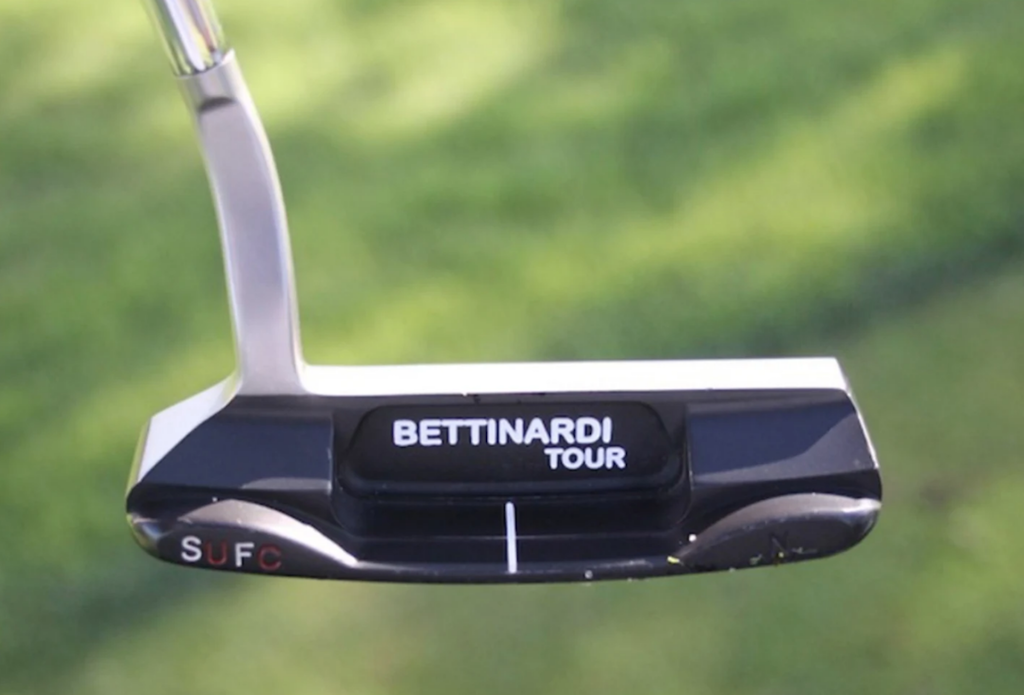
Matthew Fitzpatrick’s custom Bettinardi blade-style putter
Brendon Todd (No. 3: Sik Pro C-Series)
Cameron Smith (No. 8: Scotty Cameron 009M Prototype)
Matt Kuchar (No. 11: Bettinardi Tour Department SS28 DASS)
Marc Leishman (No. 15: Odyssey Versa #6)
Alex Noren (No. 18: Odyssey O-Works 1W)
Maverick McNealy (No. 19: Toulon Stanford MM Custom)
Matt Fitzpatrick (No. 22: Bettinardi DASS Prototype)
Tommy Fleetwood (No. 26: TaylorMade TP Juno)
Patrick Rodgers (No. 30: Odyssey Toulon San Diego)
Seung-Yul Noh (T35: Scotty Cameron Select Prototype)
Scott Stallings (No. 44: Scotty Cameron Newport 2.6 Prototype)
Brooks Koepka (No. 45: Scotty Cameron Teryllium TNP2)
Justin Lower (T46: PXG Prototype)
Richy Werenski (No. 48: Scotty Cameron Circle T Prototype)
Patrick Reed (No. 49: Odyssey White Hot Pro #3)
Conclusion
In 2018, 44 percent of the top-50 players in the Official World Golf Rankings were using mallet style putters, and 56 percent of the top-50 in strokes gained: putting were using mallet putters.
In 2022, 62 percent of the top-50 players in the OWGR use mallet style putters, and 70 percent of the top-50 in strokes gained: putting were using mallet style putters.
What do you think this means?
To me, it means that each golfer should try as many putters as possible – under the supervision of a professional fitter or local club professional – and find the best possible putter to fit their stroke style and preferences.
- LIKE188
- LEGIT43
- WOW15
- LOL7
- IDHT4
- FLOP3
- OB1
- SHANK14
Putter Reviews
REVIEW: Ping’s new PLD (Putting Lab Design) putters for 2022
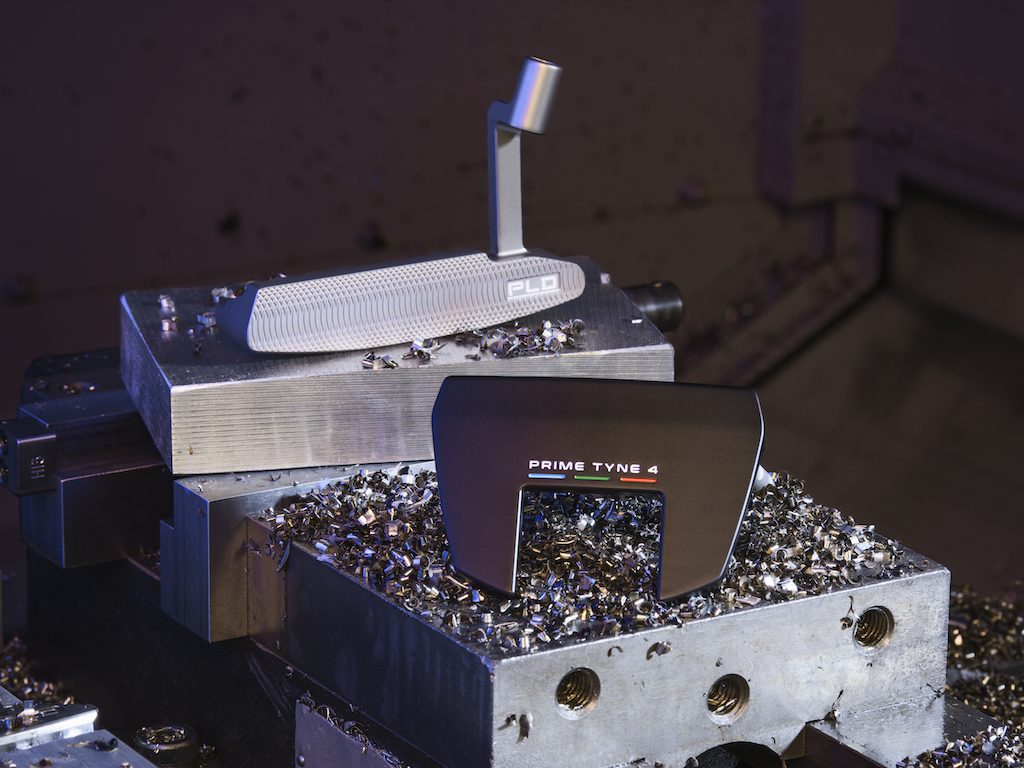
Not every golfer has access to custom-built golf putters like PGA Tour players do, but with Ping’s new PLD (Putting Lab Design) program, they can get pretty darn close.
Through the newly launched website, pingpld.com, golfers will have access to precision milled putters like the ones seen on Tour, and they can even customize their own putter with a Tour-level fitting experience either online or in person.
There’s three essential levels to the new PLD program: PLD Custom, PLD Limited and PLD Milled. Each of the levels comes with different putter options at differing price points.
“The PLD program allows us to bring golfers more of what we do best – design and build the highest-performing custom putters in the game,” said Ping President John K. Solheim, in a press release. “It offers nearly endless possibilities. Golfers can craft their own custom design through PLD Custom, choose the proven performance of a PLD Milled model or add to their putter collection by acquiring a PLD Limited. It gives golfers a chance to play what the pros play and own a piece of Ping history.”
“We established the PLD name several years ago as an extension of the PING Putting Lab,
where we’ve been fitting some of the top players in the world for more than 20 years,” said
Solheim. “Until now, access to the master fitters who deliver these custom putter experiences has been limited to the best players in the game. We can now bring golfers what they’ve been asking for either through a virtual or in-person experience.”
Below, we go further in-depth on each of the three options within the PLD program.
Ping PLD Milled
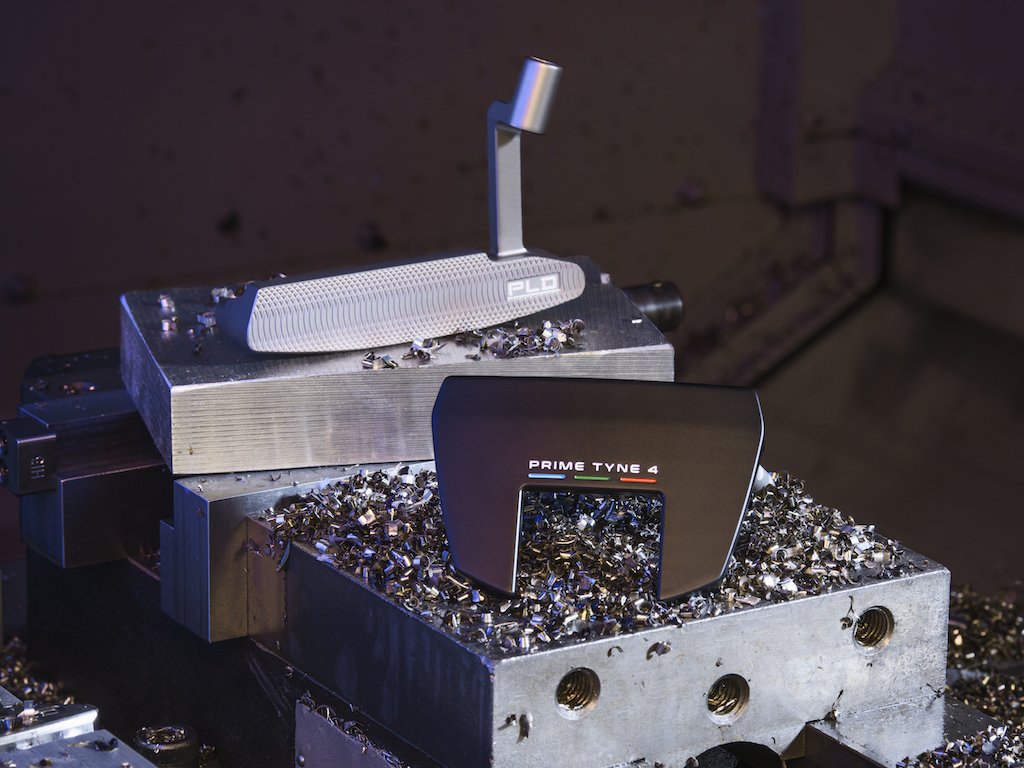
PGA Tour players such as Viktor Hovland, Tony Finau and Bubba Watson use Ping PLD precision milled putters, and now consumers will have access to those Tour-proven putters.
Each of the heads (Anser, Anser 2, DS72 and Prime Tyne 4) are machine milled from forged 303 stainless steel. Ping offers a breakdown of the specs for each available model, which will sell for $485 each:
Anser
Slight Arc
350g
Matte Black finish
Ping black graphite shaft
Lie Angle: 20° +/- 4°
Loft: 3° +3°/- 2°
Anser 2
Slight Arc
350g
Satin finish
Chrome stepless steel shaft
Lie Angle: 20° +/- 4°
Loft: 3° +3°/- 2°
DS72
Straight Stroke
365g
Satin finish
Chrome stepless steel shaft
Lie Angle: 20° +/- 2°
Loft: 3° +3°/- 2°
Prime Tyne 4
Aerospace grade, machined aluminum hosel
Strong Arc
360g
Matte Black finish
Matte-black stepless steel shaft
Lie Angle: 20° +/- 4°
Loft: 3° +3°/- 2°
“The PLD Milled is an exciting addition to our putter line,” said John K. Solheim. “We’ve
identified a couple of our most popular models from the past and some newer designs that have attracted a lot of attention in the last couple of years. We’ve given the new putters a very clean, premium look to emphasize the precision process they undergo before they are ready for play. As we collaborate on new designs with our engineers and tour staff through the PLD program, we’ll add new models to bring golfers the latest in tour-proven performance on the putting green.”
Ping PLD Limited
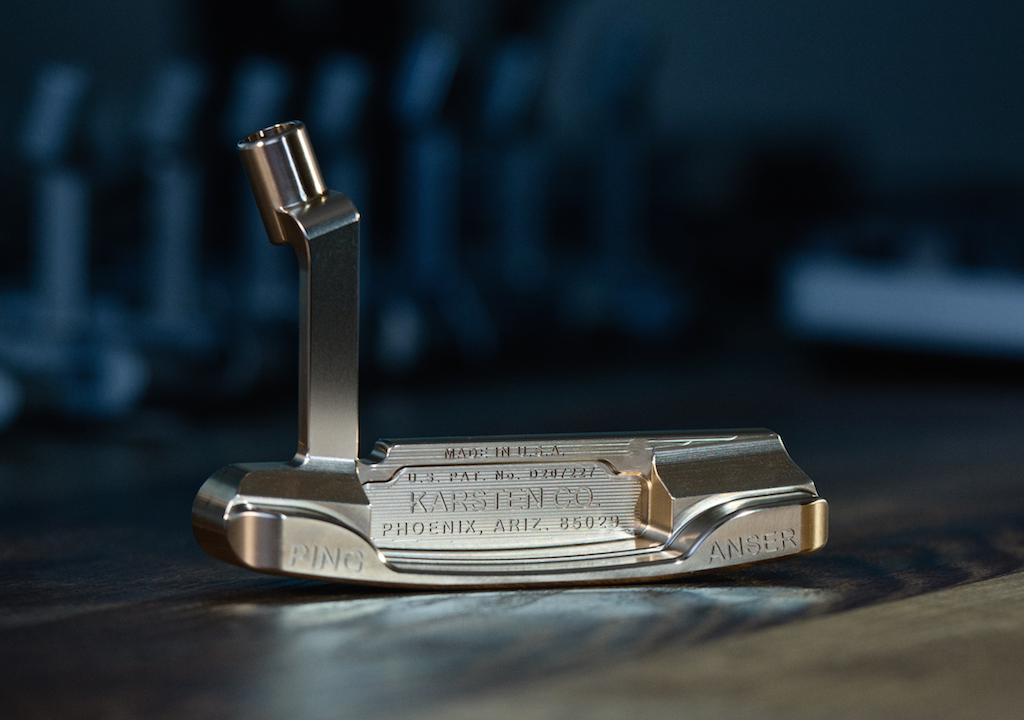
Ping’s PLD Limited will feature periodic limited-edition releases consisting of either putters that are played on Tour, or iconic designs from history. According to Ping, these putters are mostly targeted toward collectors, so they will have serialized numbers and will not be available for custom modifications.
For its first release ($790), Ping developed a 2022 version of the original Ping Anser, celebrating the 55th Anniversary of receiving the original Anser Patent on March 21, 1967.
“A lot of time has passed since the invention of the Anser putter,” said John A. Solheim, Ping’s Chairman & CEO and the youngest son of Karsten Solheim, who designed the original putter. “We think it’s important to remind the golf industry and some of the younger golfers that the iconic design they see with other brands’ name on it was created by Karsten in his garage in the mid-1960s. I was fortunate to be at his side building the first Ansers, and continued to do so for many years. It’s time Karsten gets the credit he deserves for inventing the Anser putter.”
Ping PLD Custom
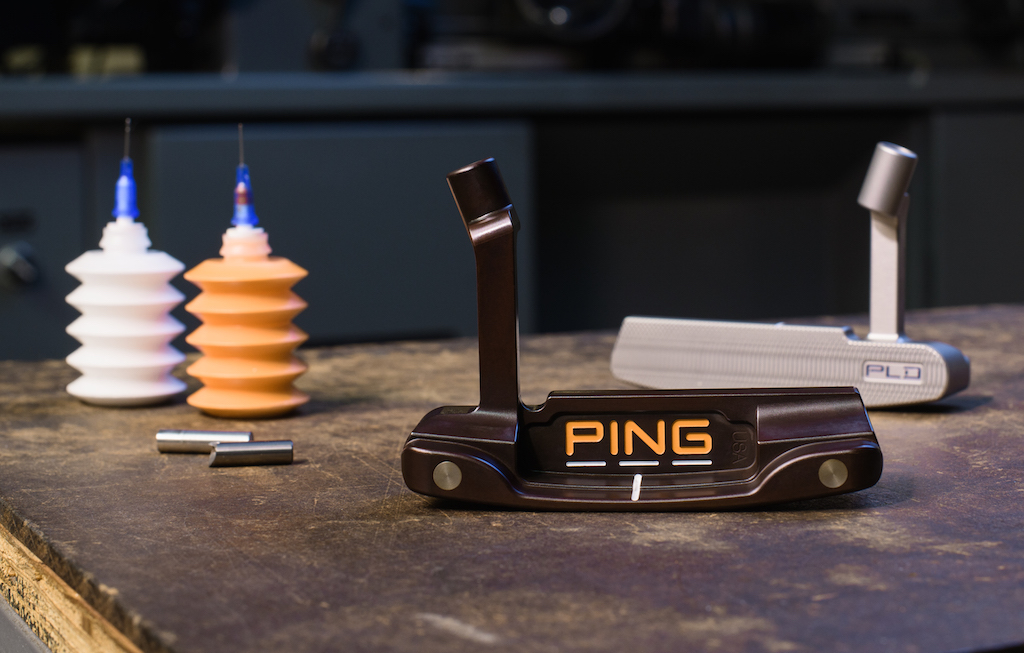
The highest level in the Ping PLD program feature the PLD Custom putters, where golfers can customize their own designs with either the help of a Ping Master fitter in person, or virtually through the PLD program online. To help golfers find their perfect putter, they will use the PLD iPing putting app, and a Ping Master fitter will analyze the player’s data to recommend a putter.
Then, golfers can fully customize the putter to their liking, with ability to change head model, Tungsten weighting, face milling, finish, alignment aids, stampings and paint fill. Ping’s Master Fitters will also help golfers get the correct length, lie angle and loft for their stroke and biometrics.
The putters themselves will sell for $1,290, and a $200 non-refundable payment is required to schedule and participate in a PLD Custom Fitting, whether it’s virtually or in person.
Personally, I received a Ping PLD Custom Fitting in-person at the company’s indoor facility in Phoenix, Arizona. After identifying my stroke flaws (of which there many) using Ping’s iPing putting app, I tried out a slew of different head options and we made head adjustments along the way to figure out what truly works. Here were my final specs:
Head model: Ping Anser
Finish: Patina
Weight: 350 grams
Alignment line/dot: None
Stamping: “T” on the hosel
Length: 35.5 inches
Shaft: Chrome Stepless Steel
Grip: PP58 Black Midsize
What blew me away most was how impactful length and lie angle can be on comfort at address and stroke pattern. Even minor changes felt drastic. Also, the depth of face milling can truly change both feel and sound; I never realized how much.
Another point of note: Switching up alignment lines obviously can affect aim, but for me, they also influenced my stroke itself due to the visual changes. I highly suggest going through a full putter fitting to determine what specifications you prefer for yourself.
Check out the photos below of the putter that was designed for me through my work with a Ping Master Fitter:
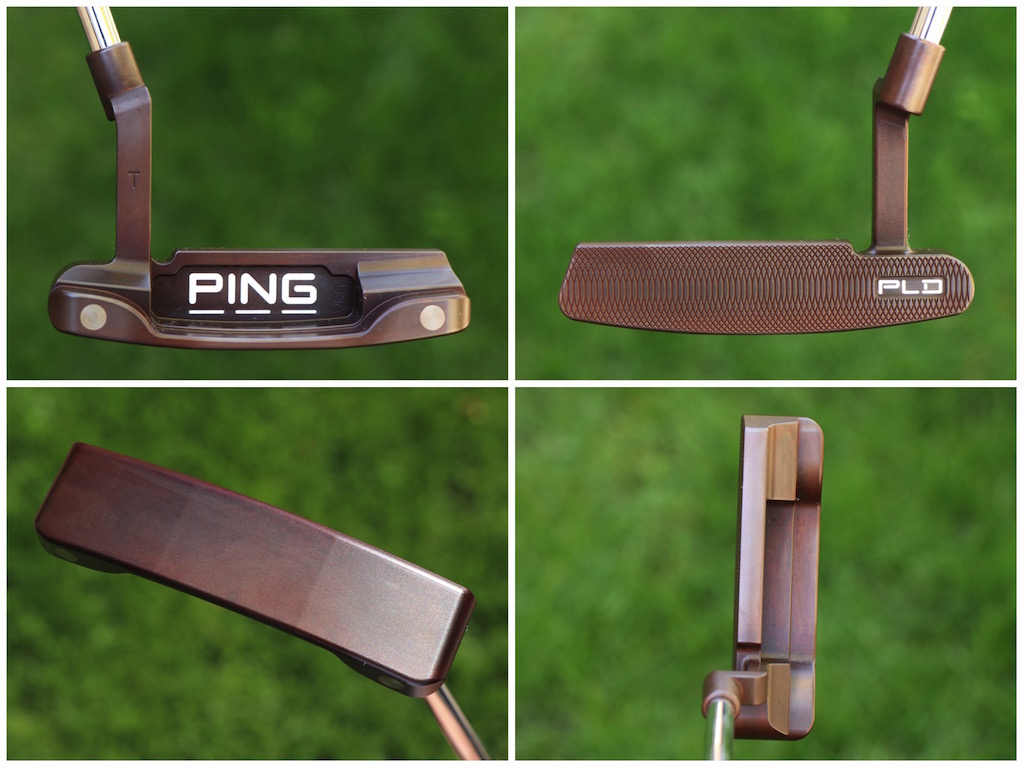
Ping PLD putters are available for pre-order today, and head over to Ping’s PLD website to book your own fitting here.
- LIKE126
- LEGIT12
- WOW15
- LOL4
- IDHT3
- FLOP1
- OB0
- SHANK10
Putter Reviews
WRX Spotlight Review: T Squared TS-713i Standard Series putter

Product: T Squared TS-713i Standard Series Putter
About T Squared: T Squared Putters is a small putter manufacturer just south of Buffalo, New York. The company was founded by Tony Tuber who created his first prototype putters, after hours, in his father’s machine shop. Since then Tony and his father have been creating high-quality putters in the same facility that creates high precision instruments for the medical field. They pride themselves on creating the highest quality, most precise putter they can offer. They offer a few different head shapes from small traditional blades to high MOI mallets and even a custom program to get exactly what you want.
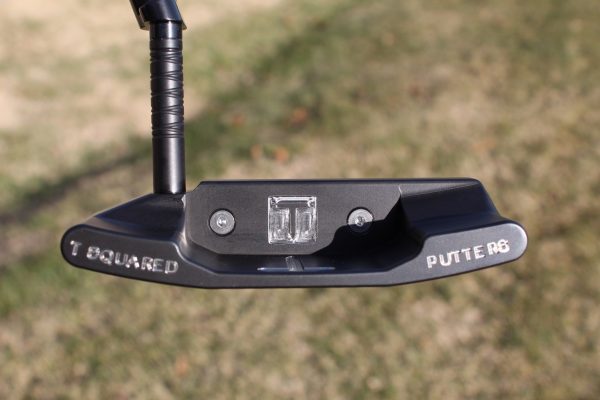
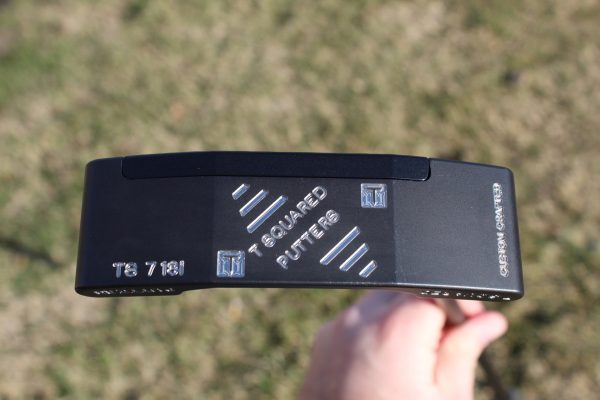
The Ts-713i Standard Series is based on the Ts-713, the first prototype that Tony created. It is a blade-style putter with a slightly longer flange and a unique face insert milled from 6061 aluminum. The body of the Ts713i is milled from a solid block of 303 stainless steel that is produced in the USA and has a Teflon backing between the body and face insert.
This Teflon backing helps give the putter a softer feel at impact and reduce any unwanted vibration. Details are what T Squared is all about and the neck of the putter shows off their milling expertise. The neck is similar to a plumbers neck, built with multiple pieces and offering some cool texture on the section bonded to the head. Another great detail is that all the silver markings on the putter are not filled with paint, they are milled into the head. T Squared finished the head in a sharp matte black and then milled all the markings on the putter for a unique, shiny silver look that really stands out. Ts-713i putters are built for customizing and have a ton of options that you can select if you would like to build something totally unique
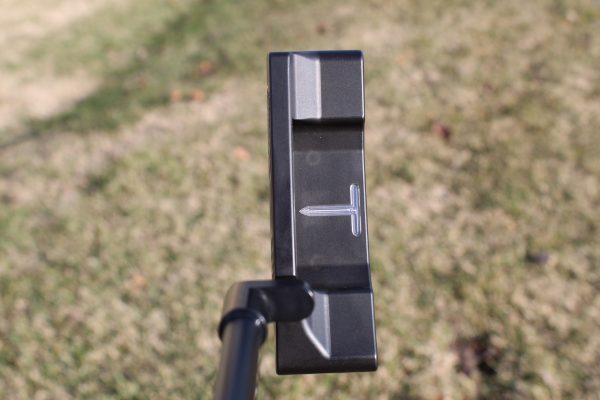
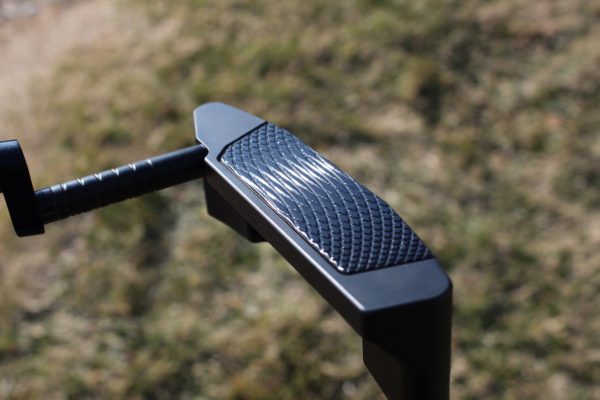
On the green, the T Squared TS-713i really performs fantastic. I found the feel at impact very solid without any unwanted vibration. The impact produces a muted click and soft feel that I wasn’t expecting from this aluminum insert and thin face. The deep milling and Teflon coated back to the insert really work together to produce a great, responsive feel that I enjoyed. Deep milling usually makes me a little worried because it can soften the putter too much and lose that feel we all demand.
The TS-713i has no issues and transmits impact feel back to your hands with ease. Mishits are a little louder and harsh, but nothing even close to unpleasant. I have used putters that don’t feel as good on perfectly struck shots as the TS-713i feels on mishit putts. Distance and accuracy on those mishit putts are not as drastic as you would expect with a blade putter. I often just missed the cup by small margins when I struck a putt on the toe or heel of the TS-713i. There aren’t too many blade putters that have shown this level of forgiveness on the green for me.
The “T” alignment aid on the flange of the putter is large and easy to use. Not only do you get a straight line from the face to the back edge for alignment, but the back of the “T” also helps you square the putter up to your target. The Pure grip is not my thing, and it would be great for T Squared to offer a few more options, but that is an easy fix and a very minor criticism.
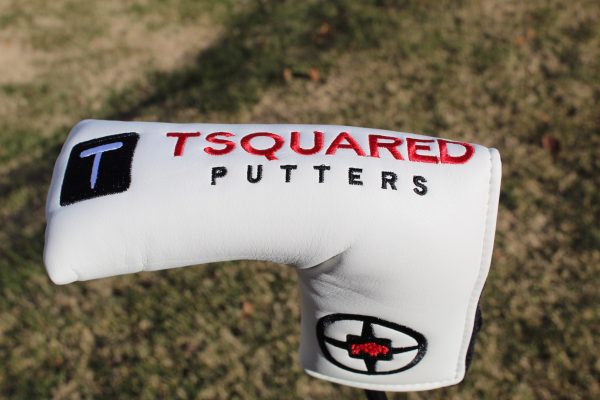
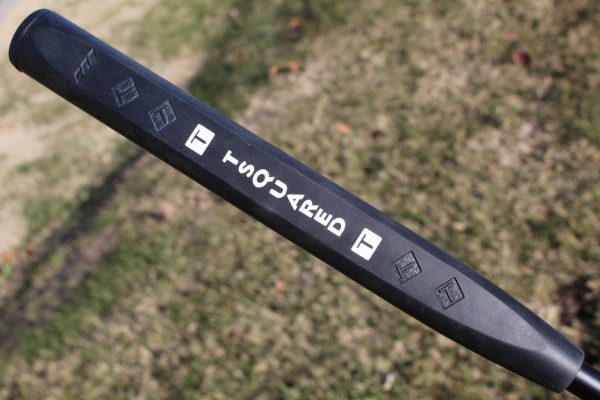
Overall, the T Squared TS-713i is a great putter from young Tony Tuber that exceeded my expectations. His attention to detail, precision milling, and take on a classic head shape offer golfers something different without sacrificing any performance. If you are looking for a great feeling putter that is made in the USA, you should take a look at T Squared and see what they can make for you.
- LIKE61
- LEGIT15
- WOW6
- LOL2
- IDHT2
- FLOP5
- OB0
- SHANK6
-

 19th Hole2 weeks ago
19th Hole2 weeks agoDave Portnoy places monstrous outright bet for the 2024 Masters
-

 19th Hole2 weeks ago
19th Hole2 weeks agoTiger Woods arrives at 2024 Masters equipped with a putter that may surprise you
-

 19th Hole3 weeks ago
19th Hole3 weeks agoReport: Tiger Woods has ‘eliminated sex’ in preparation for the 2024 Masters
-

 19th Hole11 hours ago
19th Hole11 hours ago‘Absolutely crazy’ – Major champ lays into Patrick Cantlay over his decision on final hole of RBC Heritage
-

 19th Hole1 week ago
19th Hole1 week agoTwo star names reportedly blanked Jon Rahm all week at the Masters
-

 19th Hole7 days ago
19th Hole7 days agoReport: LIV Golf identifies latest star name they hope to sign to breakaway tour
-

 19th Hole1 week ago
19th Hole1 week agoNeal Shipley presser ends in awkward fashion after reporter claims Tiger handed him note on 8th fairway
-

 19th Hole6 days ago
19th Hole6 days agoBrandel Chamblee has ‘no doubt’ who started the McIlroy/LIV rumor and why















Chris Hoeppner
Nov 2, 2008 at 7:46 pm
Eric,
Amazing Review. Glad that you are really enjoying the putter. It was a pleasure working with you on the design.
Thanks
-Chris Hoeppner
MACHINE Putters Rep